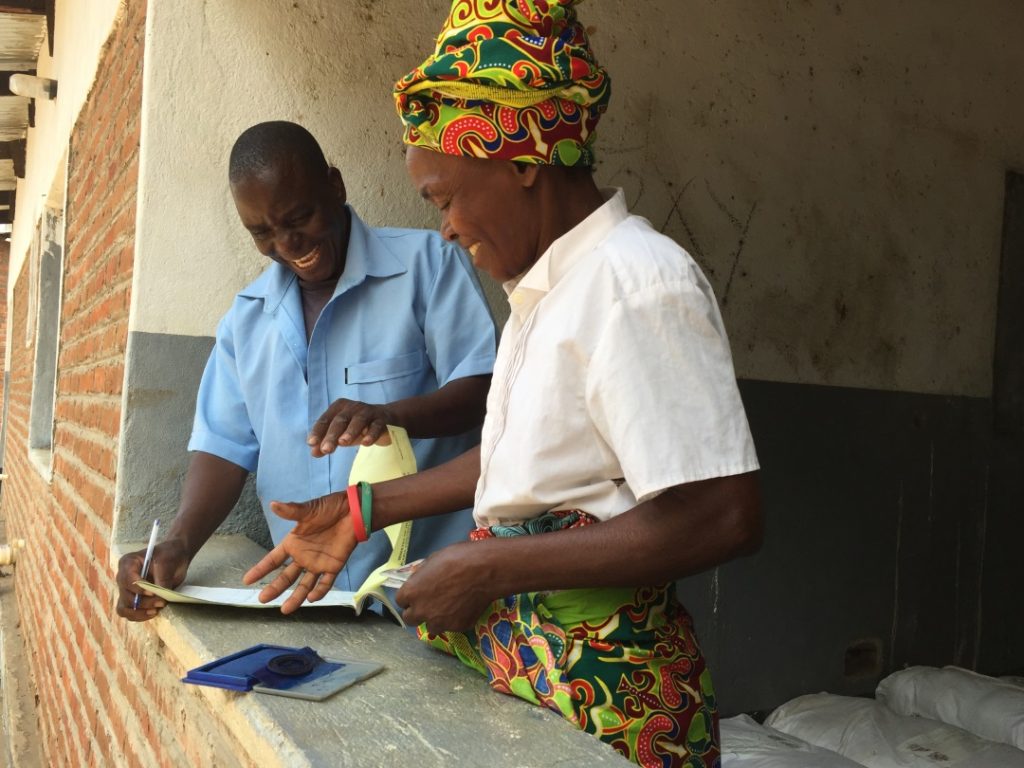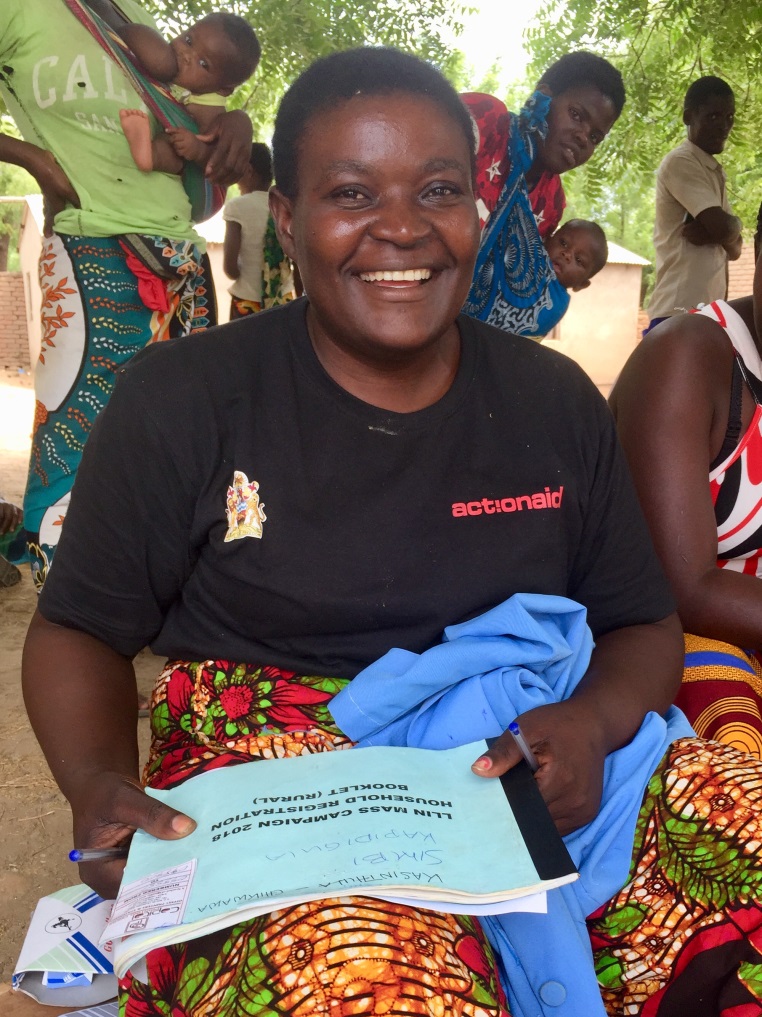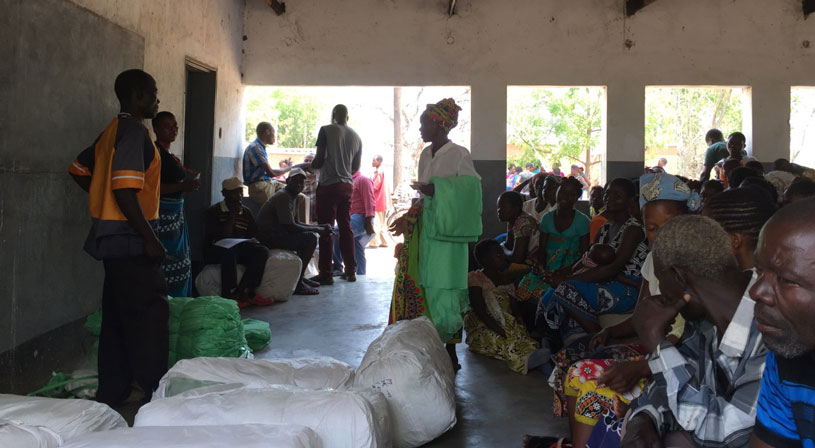
A woman marks a register book with her fingerprint to acknowledge receipt of insecticide-treated nets
By mid-morning, the temperature has climbed close to 40 degrees Celsius (104 degrees Fahrenheit) in Chikwawa District, southern Malawi. Community members had arrived early in the morning to await trucks from a warehouse in Blantyre to deliver the insecticide-treated mosquito nets that are being distributed through the country’s mass campaign.
About 10.9 million nets, donated by the Global Fund and the Against Malaria Foundation, are being distributed nationwide. Two million of them are pyrethorid-piperonyl butoxide nets, which appear to improve protection against malaria in areas with high-pyrethroid resistance, such as Malawi.
The campaign is a massive undertaking, requiring participation and collaboration across government sectors; national, district and community levels; and donors and implementing partners. Efforts are coordinated by Malawi’s National Task Force, which comprises the National Malaria Control Program, World Vision, media outlets, police and other parts of government, implementing partners, WHO and donors such as the U.S. President’s Malaria Initiative.
Health surveillance assistants (HSAs) are one of the most critical components of the campaign. Because they are based in the communities and know villagers, they are tasked with registering households to help make sure that the correct number of nets are sent to the appropriate distribution points to protect the people living in that area.
On the day of distribution, HSAs are at the distribution points, checking people’s identification cards, handing out nets, and having recipients indicate receipt by signing their names or, for those who cannot write, pressing a fingerprint into the record book. It’s difficult work, and requires patience, attention to detail, and good communication skills.
At the onset of distribution, HSAs and community volunteers erect a model net, to demonstrate the correct way to hang the nets. They explain what causes malaria; how nets can protect people from contracting it; and that people should sleep under their nets every night all night, air them out before first use, and wash them gently when dirty. They also emphasize that the nets should never be used for any unintended purpose such as fishing (though Chikwaka District is not along the lakeshore, the Shire River runs through it and some villagers fish in it).
Dines Nkhombeza, age 37, has been an HSA since 2007. She has two sons, 8 and 13, and works in Simba Village, which has a catchment area of 1,099 people. Many people in the area grow sugarcane or work for Illovo, a Malawian sugar manufacturing company. Nkhombeza arrived at the distribution point at 7 a.m., just before the truck of nets arrived, and within a few hours she has distributed 630 nets to the people in her community.
“Most people have too many mosquitos in their homes and are suffering from malaria,” she says. “They understand that the nets can help.”
Upon completion of distribution of nets in Southern Region, the National Task Force convened in Lilongwe to discuss lessons learned from the first phase of the campaign, before commencing distribution in the Central and Northern Regions. Distribution of the nets will be completed before the start of the rainy season in December.


